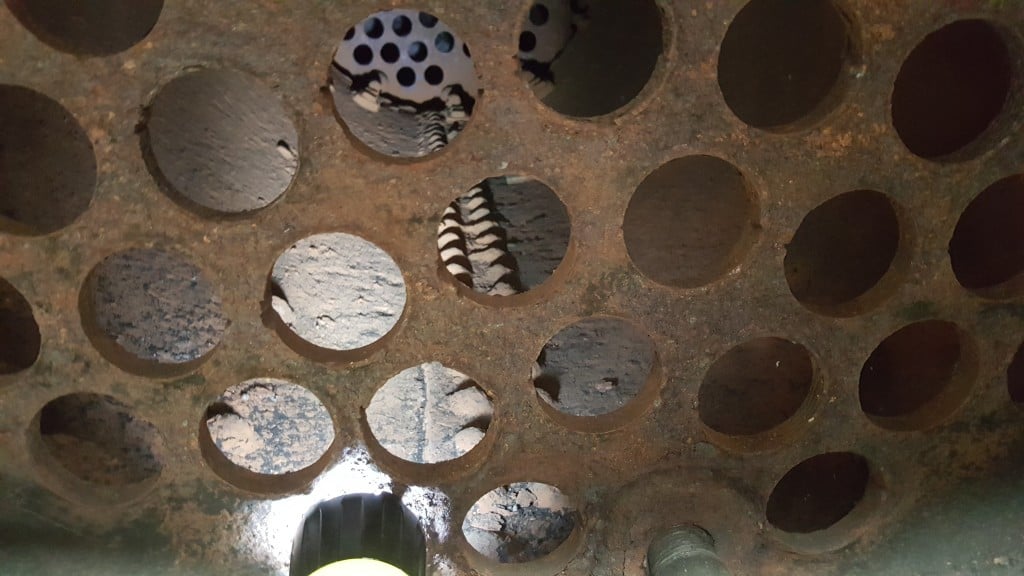Case Study – Why Pulsed Eddy Current Is A Viable Alternative To Ultrasonic Testing

Image Source: Eddyfi Technologies
Ultrasonic testing (UT) is widely accepted as an accurate Non-Destructive Testing (NDT) method of checking for wall thinning in pipes or vessels that are under insulation. However, it’s not always the most practical or cost-effective option because it requires prior removal of the insulation or weather jacket.
An alternative to UT is pulsed eddy current (PEC) which uses the principle of electromagnetic induction to inspect materials and detect flaws which are typically hidden under insulation (eg fireproofing).
The following case study illustrates the effectiveness of PEC in detecting defects and corrosion under insulation and demonstrates how the technology can play a valuable role in a safe, efficient, reliable and economical non-destructive testing programme.
The test item
The item under test was a valuable antique steam traction engine which had a 10mm thick insulated carbon steel boiler, covered with a painted 0.5mm thick carbon steel weather jacket.
Previously, the weather jacket and insulation had to be removed in order to test the base of the boiler wall for thinning using ultrasonic technology (UT). The results of previous tests showed the wall had deteriorated to 2mm (20% of the original thickness).

Image Source: Eddyfi Technologies
As any further UT testing would require repeated removal of the boiler’s insulation and weather jacket which would be both costly and impractical, another solution was required.
The solution
Pulsed Eddy Current (PEC) was identified as the ideal solution as it could be done without any need for contact with the boiler wall surface. Testing for wall loss could be done quickly and cost-effectively, without necessitating the removal of the insulation and weather jacket.
The equipment
A Lyft PEC instrument with built-in SmartPULSETM technology was used. Key benefits of this product included:
- Rugged, dust-resistant magnesium alloy casing
- Ability to cool down without requiring any external air exchange
- Limited dependence on the operator because of high degree of automation and advanced algorithms
- More accurate readings due to in-built wall thickness compensation tool
The results
The results from the Lyft PEC instrument revealed wall thinning down to 1.8mm along the riveted seam at the base of the steam boiler. This 18% remaining wall thickness (RWT) was a more accurate result than the 20% measured with UT.
Benefits of PEC over UT
The Lyft PEC solution has several advantages over UT. These include:
- Faster results as no surface preparation is required
- More cost-effective as there is no need to remove or restore coatings or insulation
- More precise, repeatable and accurate measurements. The Lyft system’s unique compensated wall thickness measurement tool mitigates defect under-sizing, effectively enabling the detection of smaller flaws.
- Ability to perform in-service inspections, even in high-temperature applications. The Lyft PEC instrument can be used with a variety of products between the sensor and the surface under test including air, water, fireproofing, asphalt, concrete, bitumen, polyethene and corrosive materials eg rust.
- Advanced and intuitive SmartPULSETM software automatically optimises parameters and measurements and provides extensive quantitative data
- Reduced dependence on the operator
- Enhanced productivity. The unit’s lightweight and compact construction means it can be quickly and easily deployed and transported with ease from site to site.
The Lyft PEC system is just one of many tools that Nexxis may incorporate when developing tailor-made solutions for our customers’ non-destructive testing and remote visual inspection requirements. We listen to what our customers want and use our extensive industry experience to customise solutions that deliver tangible results. We’re serious about finding technical equipment solutions, so contact us now.
